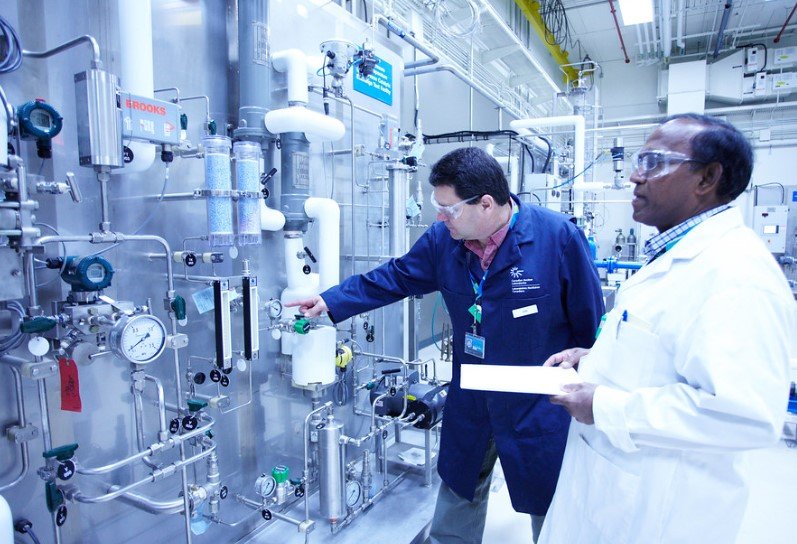In a major step for clean energy, Western Australia has launched a cutting-edge pilot plant featuring Hydrilyte Technology. This innovation promises safe, scalable hydrogen storage and transport at room temperature, addressing key challenges in the global shift to green fuel.
What is Hydrilyte Technology?
Hydrilyte Technology works by locking hydrogen into a stable liquid form using a metal hydride suspended in light mineral oil. This method keeps the hydrogen secure without the need for extreme cooling or pressure, making it a game changer for logistics.
Unlike traditional methods that rely on compressed gas or super cold liquids, this system avoids energy loss and safety risks. It allows indefinite storage with no degradation, which cuts costs and boosts efficiency for industries.
Experts highlight its role in decarbonizing hard to abate sectors like steel production. By enabling easy transport via existing pipelines and tankers, it speeds up hydrogen adoption worldwide.
The technology also separates hydrogen from helium, adding value to natural hydrogen projects in Australia. This versatility extends its use beyond renewable sources.
Pilot Plant Launch in Western Australia
The pilot plant opened in Kwinana, Western Australia, on August 18, 2025. Backed by over 16 million dollars in funding, including from major players like Woodside Energy, it tests the tech at an industrial scale.
This 100 kilowatt prototype demonstrates real world performance. Early results show it handles hydrogen safely at ambient conditions, paving the way for broader rollout.

Local leaders see it as a boost for economic growth and job creation in the hydrogen sector. The facility aligns with Australia’s push for energy security and low carbon exports.
Investors praise its potential to diversify the economy. As global demand for clean energy rises, this plant positions Western Australia as a leader in hydrogen innovation.
The launch comes amid rising interest in hydrogen, with recent events like international summits emphasizing safe storage solutions.
Key Benefits for Hydrogen Logistics
Hydrilyte offers several advantages over conventional systems. It reduces hazards by storing hydrogen as a non flammable liquid, easing regulatory hurdles.
Compatibility with current infrastructure means no need for massive new investments. This could lower transport costs by up to 50 percent in some cases, based on industry estimates.
Here are the main benefits:
-
-
- Safe handling: No explosion risks during storage or movement.
- Cost savings: Uses existing fuel networks for distribution.
- Scalability: Suitable for large scale industrial applications.
- Environmental edge: Supports green iron and steel production.
-
The tech also enables long distance shipping without energy waste. This flexibility matches supply with demand, reducing overall waste in the supply chain.
Challenges and Future Outlook
While promising, scaling up poses hurdles like initial setup costs and integration testing. Experts note that full commercial use may take a few years of refinement.
Recent global events, such as hydrogen leaks in transport trials elsewhere, underline the need for safer options like this. Australia’s natural resources make it ideal for leading this space.
Looking ahead, the pilot could expand to export markets. Partnerships with international firms are already in talks, aiming for widespread adoption by 2030.
A table of comparison highlights its edge:
| Feature | Hydrilyte Technology | Traditional Compressed Gas | Liquefied Hydrogen |
|---|---|---|---|
| Storage Temp | Ambient | High pressure | -253°C |
| Safety Risk | Low | High | Medium |
| Cost Efficiency | High | Medium | Low |
| Infrastructure | Existing | Specialized | Specialized |
This data shows why Hydrilyte stands out for practical use.
Ongoing trials will measure performance metrics. Success here could transform hydrogen into a mainstream fuel, aiding climate goals.
Impact on Global Clean Energy Transition
This innovation ties into broader trends, like the push for net zero emissions by 2050. Countries worldwide are investing billions in hydrogen, with Australia aiming to become a top exporter.
It supports heavy industries in reducing carbon footprints. For instance, green steel production could benefit hugely, creating thousands of jobs.
The tech’s ability to store hydrogen indefinitely helps balance renewable energy fluctuations. This reliability is key for stable power grids.
As more pilots succeed, expect faster policy support and funding. The Western Australia project sets a model for others to follow.
Share your thoughts on this hydrogen breakthrough in the comments below, and spread the word by sharing this article with fellow clean energy enthusiasts.








